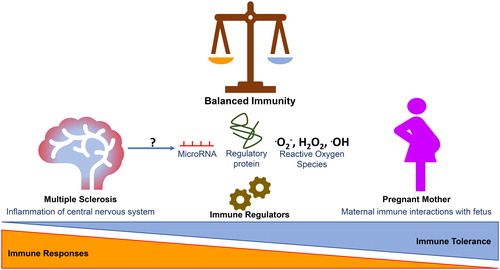Balanced metabolism, cell signaling, influx or efflux of various biomolecules, metabolites within a cells and regulation of physiological processes are key features of a living entity and are achieved through multi-level cellular and molecular regulators. In higher animals, like various physiological processes, the host immune responses are tightly regulated at cellular and molecular level to ensure clearance of invading pathogens and avoid deleterious immunity-mediated autoimmune diseases. The molecular signaling is mainly regulated at transcriptional and translational level. The transcriptional level regulations are mediated by various non-coding RNAs such as circular RNAs, long non-coding RNAs, microRNAs and by RNA modifying enzymes, whereas various post-translational modifications such as phosphorylation of protein, proteolytic cleavage of precursor protein, addition of sugar moieties to generate structural and functionally competent protein are some of translational level regulation. The cellular level regulations of immunity are mediated by various cell types such as regulatory T cells. This last issue of International Reviews of Immunology focuses on articles discussing organ, cellular and molecular level immune regulation and its impact on host defense ().
The interaction of the mother’s immunity with a genetically distinct (hemiallogenic) developing fetus during gestation period is an excellent example of immune tolerance. The mother’s immunity protects the fetus from infection and support fetal development without developing any immune responses against the fetus. During gestation period, the reorganization of maternal immunity is taking place at the organ, cellular and molecular levels such as restructuring blood vessels in the uterus, development of tolerant innate and adaptive immune cells and production of factors and cytokines from by maternal-fetal origin placenta to develop an immunosuppressive condition. The first review article in this issue by Li et al. discusses the immunology interfaces of a fetus and a mother that result in the immunosuppression on the maternal side, which lead to the full-term development of the fetus.Citation1 This article also provides deep insight of the cellular and molecular basis for immune tolerance that may be helpful in understanding other pathologic aspects of immune suppression induced by developing tumor or cancerous growths in the host. In addition, the article provides potential molecular targets for immune suppression. Overall, this article will be not only be useful to the clinician, particularly gynecologist, but it is also important for researchers working on various interfaces of immunology such as reproductive immunology, tumor-immunology, transplant-immunology, and so on ().
Mutiple Sclerosis (MS) is progressive neuroinflammatory and neurodegenerative complex autoimmune disease that affects the central nervous system. The disease is characterized by immune distruction of the myelin sheath, leading to the poor transmission of nerve signals, although the trigger for the development of autoimmune responses or molecular mechanism for development of MS is poorly understood. However, host genetics and environmental factors are suggested to play a crucial role in the development of this disease. Patients suffering from MS show a wide range of neuropathies and neuro-myopathies such as depression, weakness or muscle-associated symptoms, sexual dysfunction, and optic neuritis. Multiple immunomodulatory drugs including type I interferons, biologics and monclonal antibodies are avilable to treat MS patitents. However these drugs are associated with various side-effects. The second review in this issue by Ehteshama et al. discusses the disease modifying therapies (DMT) given to MS patients to prevent relapse and the adversity of the disease. The article discusses the changes in microRNA regulating signaling pathways in cells/tissues during MS. The review articles are important in the understanding the approaches of appropriate prognostic and diagnostic tools for MS. This article will be interesting to broad readers of immunology and rheumatology ().
The phosphorylation, dephosphorylation, ubiquitination, deubiquitylation, and several other post-translational modifications are key in cell signaling and are required to either “switch on” or “switch off” the downstream signaling cascade that is not only important in immune cells but also in various biological processes. The wild-type p53 phosphatase 1 (Wip1) was demonstrated to play a role in different biological processes such as neurogenesis, aging, cell senescence, apoptosis, and development of cancer. The third review article of this issue by Shi et al. describes the regulatory role of Wip1 in various immune cells and signaling pathways. This article also describes this molecule as a potential candidate for therapeutic manipulation for various immunity-associated diseases.Citation3 This article will be helpful to immunologists, onco-immunologists, and other related disciplines of immunology ().
Reactive oxygen species (ROS) is a highly reactive metabolic intermediate, produced through series of biochemical reaction in the living cells and needed for biological processes such as apoptosis and regulation of cell proliferation. ROS play a crucial role in innate immune responses by killing intracellular pathogens in phagocytic cells such as macrophages, neutrophils, and dendritic cells. The last article in this issue by Yang et al. discusses the regulatory mechanism of ROS production, the role of ROS in polarization of macrophages, and antigen presentation.Citation4 This article will be useful to broad readers of innate and adaptive immunologists ().
References
- Pregnancy immune tolerance at the maternal-fetal interface (1777292).
- microRNAs: Key modulators of disease-modifying therapies in multiple sclerosis (1779712).
- The biological function and the regulatory roles of wild-type p53-induced phosphatase 1 in immune system (1795153).
- Reactive oxygen species and immune regulation (1768251).

